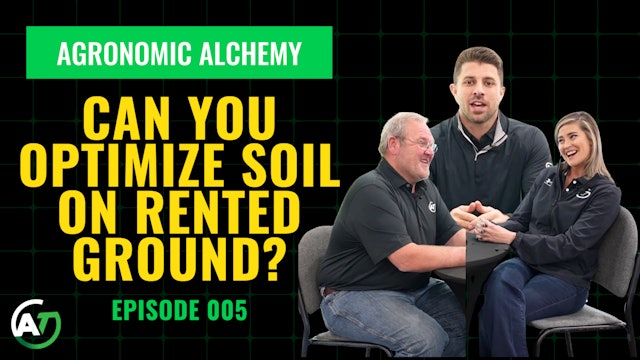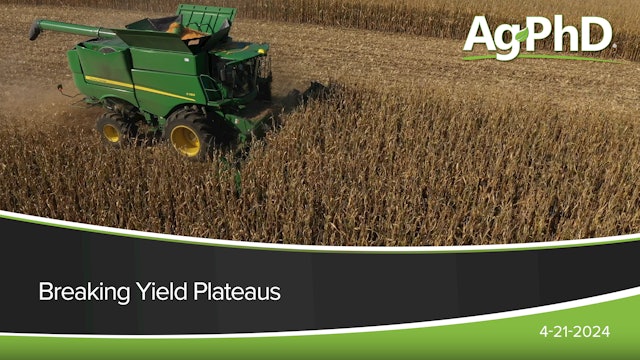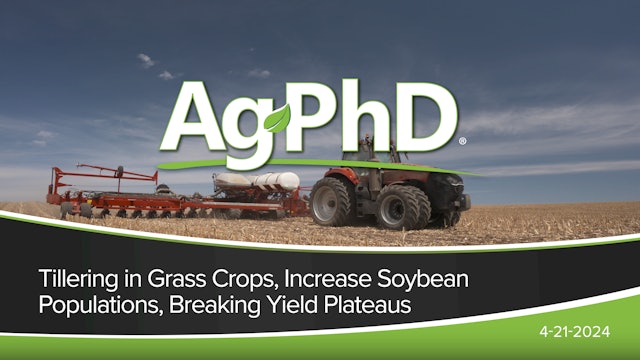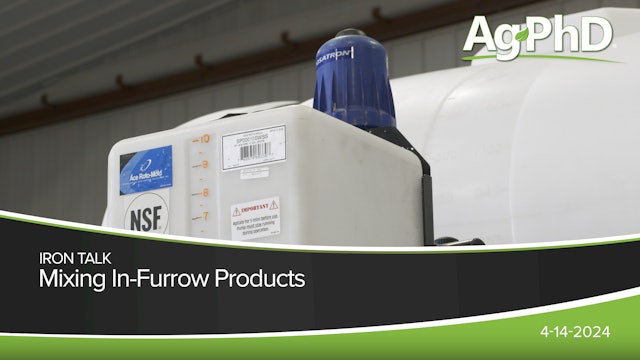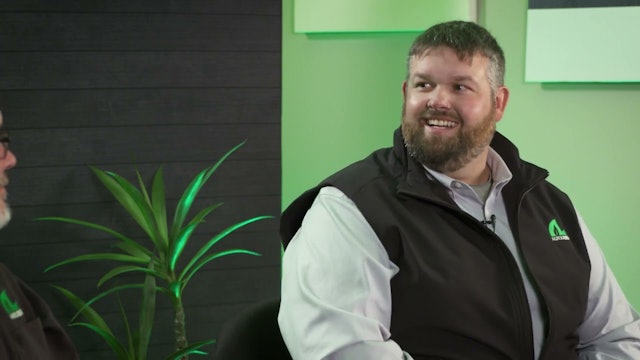Fertility
Crops don’t grow well without ample plant food, and fertility is the biggest recurring expense on any farm. Finding the best and most cost-effective ways to meet the fertility needs of your crops will help them thrive all season long and build better yields at harvest.
-
Soil Organic Matter | Ag PhD
Learn what organic matter is and how it benefits soil.
-
How NutriCharge Boosted Wheat's Yield & Quality | AgroTech
Join us as Molly Alexander, Southeast Regional Agronomist for AgroTech USA, visits Luke Harvey of Sunrise Dairies in Eatonton, Georgia, to discuss the remarkable success of his wheat crop using NutriCharge. In this video, Luke shares his experiences from last year's harvest and explains why he ch...
-
Nutrient Know-How: Oxygen is the Soil's Most Abundant Nutrient | XtremeAg
Oxygen is an important element for plant growth. Reducing its concentration in the soil affects nutrient and water uptake as well as respiration.
-
The Value of a Root Pit | Ag PhD
Can you dig it? Brian and Darren explain how root pits can unearth deeper insights into root development, soil health, and crop productivity.
-
Drop Tube Applications | Ag PhD
Precision application tech is revolutionizing crop protection and nutrition. Darren Hefty explains how a simple but elegant solution can keep your crop growing.
-
Late-Season Nitrogen | Ag PhD
N is the star of your soil, so it's important to get it right. The Heftys give expert tips on managing and monitoring nitrogen from here to harvest.
-
How to Solve Farming Limitations & Phosphorus Problems | AgroTech
Welcome to another insightful episode of Agronomic Alchemy, brought to you by AgroTech USA, where we delve into the pivotal role of phosphorus in transforming agriculture in Alabama. Since our establishment in 2014, AgroTech USA has been at the forefront of pioneering innovative solutions for a m...
-
How to Make Recommendations Based on the Phosphorus in Soil Tests | AgroTech
Welcome to the second episode of "Agronomic Alchemy," the podcast series by AgroTech USA, where we delve into the magical world of soil science, phosphorus, and agrotechnology!
🌱 Episode Overview:
In this episode, we're unpacking the mysteries of phosphorus in soil tests. Our experts discuss th...
-
Where Does Phosphorus Come From & How Do Plants Access It | AgroTech
Welcome to the first episode of Agronomic Alchemy, brought to you by AgroTech USA!
Since our inception in 2014, AgroTech USA has been at the forefront of agricultural innovation, focusing on sustainable production and responsible management of vital resources. Our mission is simple yet profound:...
-
In-Season Soil Testing
Find out how to maximize your fertility investment by soil testing in-crop for leachable nutrients like nitrogen, sulfur, and boron.
-
Plant Growth Hormones | Ag PhD
The Hefty brothers discuss the reasons why plant growth hormones are used; either to restrict or increase growth.
-
Soybean Growth and Development, Plant Growth Hormones, In-Season Soil Testing
Brian and Darren discuss the stages of soybean plant growth, how to make use of plant growth hormones in your crops, and why you should consider doing some in-season soil testing to improve your fertility when it comes to leachable nutrients like nitrogen, sulfur, and boron.
-
Compaction Concerns | Ag PhD
Feeling the pressure of soil compaction in your field? The Heftys provide a ton of advice on identifying and mitigating this pressing problem.
-
Rainy Day Work | Ag PhD
Mother Nature throwing you a curve ball? When there's a rain delay in the fields, Darren's list of indoor jobs will keep you warmed up in the bullpen.
-
Nutrient Know-How: The Biggest Problem with Calcium is... | XtremeAg
Calcium is important on so many different levels, including adding to cell structure and giving the plant strength.
-
Pasture Management | Ag PhD
Learn how to increase grass production and maintain livestock health by using fertilizer and maintaining weeds in your pastures.
-
Insect Control in Lawns, Surface Crusting, Pasture Management | Ag PhD
The Hefty brothers discuss controlling insects in your lawn, how to deal with surface crusting in fields, and how to increase grass production in pastures.
-
Nutrient Know-How: Potassium is Key to Grain Quality | XtremeAg
Potassium is incredibly important during reproduction stages of corn and soybean plants.
-
How to Maximize Soil Nutrients on Leased Land | AgroTech
Dive into the world of Agronomic Alchemy with AgroTech USA! In this enlightening podcast episode, our hosts James, Temples and Molly unravel the complexities of managing soil fertility on leased land. This discussion is a treasure trove of insights for farmers navigating the nuances of rented agr...
-
Breaking Yield Plateaus | Ag PhD
Hitting the yield wall? The Heftys give you the right tools to smash through it.
-
Tillering Grasses, Increase Soybean Population, Breaking Yield Plateaus | Ag PhD
The Heftys talk about a bushy phenomenon in crops, why you should plant soybeans the opposite way you do corn, and tricks to get higher yield numbers. The Weed of the Week is Amazon sprangletop, and we've got a greasy Iron Talk.
-
Margin Calls Are a Good Thing! | AgrisAcademy
A margin call against a hedge as a grower is the result of a rising market. When we look at the total risk of a farm this is actually a good thing. As farmers we often have ownership in the bin, in the field, and years of factors of production
-
Mixing In-Furrow Products | Ag PhD
Learn how a Dosatron can help you accurately mix your in-furrow products and avoid antagonism and other problems.
-
Defining Success | AgroLiquid B2B
Whether it’s yield, return on investment, or overall profit, every farmer has goals for their acres. Clearly defining those goals helps determine best crop nutrition management strategy. Join Brad and Ryan as they explore ways to define success on your farm.





















